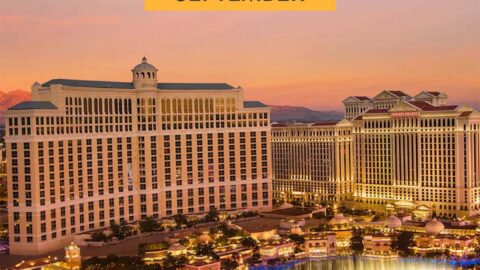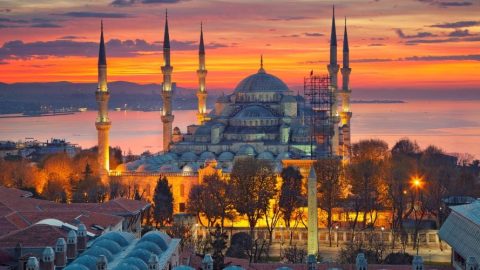(CNN) — More than 10.5 million visitors in 2019. Over $13 million in international tourism income. Close to 90% of the local GDP.
It would be an understatement to say that tourism fuels Phuket’s economy.
That same year, Indonesia’s most popular island, Bali, welcomed almost 6.3 million visitors. Phu Quoc in Vietnam, 5.1 million. Malaysia’s Langkawi, 3.9 million. The Maldives, 1.67 million. And Boracay, in the Philippines, 1.6 million.
“So if Thailand can show that we can handle things quite well — I think it will matter a great deal to the rest of Asia and perhaps pave the way for more of these sandbox models.”
Trouble in paradise
For Anthony, who also operates a food and nutrition company called Nana Bowls, the Phuket initiative is a welcome experiment.
“When travel came to a halt in 2020, many people were scared. They closed their businesses and laid off staff, selling their properties and assets. They just kind of hunkered down,” says Anthony.
“Other people, like myself, took it as an opportunity to realign their brands and services, update menus and really think about the future … Hopefully, we can get back to full pace soon because so many people have lost their jobs.”

Phuket reopened to vaccinated international travelers on July 1.
Thomas De Cian/NurPhoto/AP
Since the sandbox started last month, Anthony has observed a trickle of travelers visiting the island. Already, he has welcomed two friends who can work remotely.
“My friend did the swab at the airport, waited for results at his hotel, and within six hours, we could go out and get dinner together,” he says. “It felt so good to sit down with a close friend and give him a hug.”
As of August 1, Phuket has welcomed 14,910 international arrivals, including returning Thailand residents opting to avoid a two-week hotel quarantine in Bangkok.
And while that is a fraction of pre-pandemic numbers, experts say slow but steady growth should enable officials to monitor the situation and adapt as needed.

Phuket International Airport staff and medical personnel wear personal protective equipment as they help travelers entering Phuket on July 18, 2021.
Lauren DeCicca/Getty Images
“And when you are the first to re-open in the region, it is inevitable that you are going to get some things wrong. But Thailand has been able to stress-test some of its airports, hotel systems and new-era protocols. At the moment, the whole travel ecosystem is trying to work out what happens next, and this is made more difficult by the rapid spread of the Delta variant in Southeast Asia.”
More sandboxes on the horizon
Phuket isn’t the only Thai destination that’s welcoming vaccinated travelers.
In addition, a Phuket Sandbox extension program is scheduled to start on August 15, after being postponed from the August 1 target.
Under this model, travelers will be permitted to move on to the other pilot destinations — such as Koh Samui, Phi Phi Islands, Ko Pha-ngan, Ko Tao, Krabi, Ko Ngai, Railay Beach, Khao Lak and Ko Yao — after staying for seven days in Phuket.
The government had announced plans to deploy a similar scheme in the northern city of Chiang Mai in the coming weeks, followed by the rest of Thailand by October.
But at the moment, those plans appear to be optimistic at best due to an ongoing Covid-19 wave that is devastating mainland Thailand.
On August 5, the Southeast Asian nation reported 20,920 Covid-19 cases — the highest single-day tally so far.
Just 5.8% of the country’s 70 million population is fully vaccinated, compared with 69% of people in Phuket. Some have criticized the Thai government for prioritizing vaccinations for tourism destinations, while many elderly and frontline healthcare workers have yet to be inoculated.

Though travellers have started to enter Phuket after meeting the strict entry requirements, the island’s tourism industry is still reeling from the effects of the pandemic.
Thomas De Cian/NurPhoto/AP
Meanwhile, in response to the worsening situation in mainland Thailand, authorities have banned domestic travelers from entering Phuket from August 3-18, while tightening some restrictions for those already on the island.
“It’s a contentious issue in Phuket, with the island effectively now sealed off to domestic travelers,” says Bowerman.
“This can spread resentment about favoritism for international visitors and tourism operators on the islands. It also cuts off access for local people wanting to head to the islands to find or return to work.”
Despite higher vaccination rates, Phuket has also seen a rise in cases, registering 65 new infections on August 1.
But officials tell CNN Travel that as of now, there’s no plan to suspend the Sandbox program.
“Based on the latest update, international arrivals under the ‘Phuket Sandbox’ program can still enter Phuket per the existing rules and regulations,” Pintida Harnpanpongse, a Tourism Authority of Thailand public relations representative, told CNN Travel on July 30.
“Because we are in uncharted territory, dealing with an unprecedented crisis where we don’t have all the answers, we are getting a better picture every day of what works and what doesn’t,” he says.

A worker waits for customers at a beachside restaurant on Phuket’s Kamala Beach on July 19.
Lauren DeCicca/Getty Images
“But these are important pilot projects, which could provide a way for us to travel for the foreseeable future. Covid-19 isn’t going anywhere and we can’t hide from it forever. And if the sandboxes collapse, that is not a sign of failure, but rather a sign that Thailand needs to pull the plug, recalibrate, and come up with an enhanced project based on the learnings from this one.”
To help the pilot programs succeed, tourism leaders in Phuket have urged European governments, as well as others around the world, to treat the island as a “green zone” that is separate from the rest of Thailand.
This would be similar to how European governments have assessed Madeira island in Portugal or the Faroe Islands in Denmark.
“What’s really important is that EU countries — the national governments, spurred on by travel agents, the media and other people — recognize that it’s necessary to disengage the perception of Phuket from the rest of Thailand,” KP Ho, founder of Banyan Tree Group, said at the recent Phuket Sandbox Summit attended by various tourism stakeholders.
“It should be a situation where Thailand could be a red alert zone but Phuket could be a green zone. It could be possible to create a series of sandboxes in other destinations, such as Koh Samui, Bali and Phu Quoc.”
Asian destinations on the radar
Elsewhere in Asia, many tourism-dependent locales stand to benefit from the success of Thailand’s reopening projects.
As a travel consultant, Anthony has kept an eye on places like Bali, Sri Lanka and Vietnam.
“Tourism is one of the backbones of these economies, but I would say Bali is most similar to Phuket. Tourism is crucial in both places. They also have international airports and are considered ‘wanderlust’ destinations with their palm trees, beaches and beauty.
“So we are keeping an eye on them and they are keeping an eye on us.”
While Bali had planned to open up “green zones” that would welcome foreign visitors once the island reached its vaccination goals, the plan was derailed by a surge in Covid-19 cases.
The island is currently under tight restrictions with over 1,300 cases per day recorded in late July and reports of oxygen shortages.
“Vietnam is very different, but they can reference some of the strategies here and perhaps apply them to some of their islands,” Anthony adds.

Phuket’s once popular Patong Beach is among the areas hit hardest by the pandemic.
Thomas De Cian/NurPhoto/AP
Bowerman also points to Langkawi and Kuching in Malaysia, as well as Cambodia, and Laos as potential testing grounds for similar projects in Southeast Asia, while Singapore is looking to introduce quarantine-free travel from September.
Phu Quoc has also announced plans to launch its own tourism pilot project if it reaches vaccination goals by September, and Cambodia could open to fully vaccinated tourists by the end of the year, according to reports.
But it will come down to vaccination rates and supply, which vary across the region.
“Vaccination is absolutely crucial. You can’t open destinations without making sure your airport staff, tourism-facing staff, and all the residents are safe,” says Bowerman.
“You also have to make sure that the incoming tourists, whether they are international or domestic, are vaccinated to reduce the risk of Covid-19 infections.”
Malaysia, he says, started relatively slowly with its vaccination campaign but is now moving ahead rapidly. As of August 5, it has fully vaccinated over 30% of its residents.
“Langkawi has a very small population, so you could potentially vaccinate the entire island very, very quickly to create a sandbox-style program,” says Bowerman.
“But then you run the risk of dissatisfaction between the mainland and the islands if you prioritize restoring the tourism economies only on the islands. Plus, if you are welcome back inbound tourists, will you still permit domestic travelers to visit? Restoring a safe and equitable balance will be vital to the longer-term success of these pilot tourism schemes.”
Bowerman predicts more countries in the region will start reducing or removing quarantine requirements for inoculated travelers once vaccination rates increase.
“Everybody is watching and waiting to see what happens,” he adds. “But a proper recovery of travel in this region can’t happen until the Chinese start traveling again. We don’t know when that’s going to happen. As things currently stand, there are no indications that it will be anytime soon.”




Recent Comments